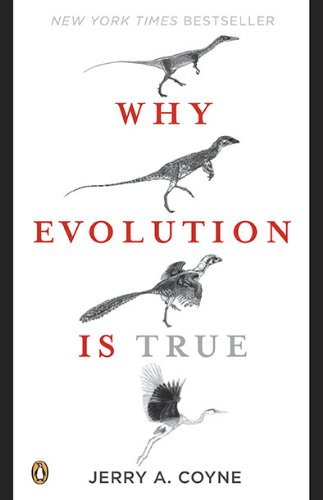Vestigial Traits in Humans
Our bodies teem with other remnants of primate ancestry. We have a vestigial tail: the coccyx, or the triangular end of our spine, that’s made of several fused vertebrae hanging below our pelvis. It’s what remains of the long, useful tail of our ancestors. It still has a function (some useful muscles attach to it), but remember that its vestigiality is diagnosed not by its usefulness but because it no longer has the function for which it originally evolved. Tellingly, some humans have a rudimentary tail muscle (the “extensor coccygis”), identical to the one that moves the tails of monkeys and other mammals. It still attaches to our coccyx, but since the bones can’t move, the muscle is useless. You may have one and not even know it.
Other vestigial muscles become apparent in winter, or at horror movies. These are the arrector pili, the tiny muscles that attach to the base of each body hair. When they contract, the hairs stand up, giving us “goose bumps”—so called because of their resemblance to the skin of a plucked goose. Goose bumps and the muscles that make them serve no useful function, at least in humans. In other mammals, however, they raise the fur for insulation when it’s cold, and cause the animal to look larger when it’s making or receiving threats. Think of a cat, whose fur bushes out when it’s cold or angry. Our vestigial goose bumps are produced by exactly the same stimuli—cold or a rush of adrenaline.
And here’s a final example: if you can wiggle your ears, you’re demonstrating evolution. We have three muscles under our scalp that attach to our ears. In most individuals they’re useless, but some people can use them to wiggle their ears. (I am one of the lucky ones, and every year I demonstrate this prowess to my evolution class, much to the students’ amusement.) These are the same muscles used by other animals, like cats and horses, to move their ears around, helping them localize sounds. In those species, moving the ears helps them detect predators, locate their young, and so on. But in humans the muscles are good only for entertainment.
Notes:
Remnants of a tail, muscles that serve no purpose, etc.
Folksonomies: evolution vestigial
Taxonomies:
/hobbies and interests/reading (0.612158)
/pets/reptiles (0.532694)
/science/social science/history/genealogy (0.528758)
Keywords:
goose bumps (0.964158 (negative:-0.422572)), vestigial goose bumps (0.775760 (negative:-0.615937)), vestigial muscles (0.744650 (negative:-0.305393)), vestigial tail (0.604938 (negative:-0.286224)), useful muscles (0.575958 (positive:0.219410)), tiny muscles (0.552607 (positive:0.261454)), Vestigial Traits (0.537987 (neutral:0.000000)), Humans Remnants (0.408335 (neutral:0.000000)), useful tail (0.374410 (positive:0.441549)), tail muscle (0.372161 (neutral:0.000000)), ears (0.371633 (negative:-0.020405)), plucked goose (0.368545 (positive:0.282374)), triangular end (0.339762 (negative:-0.290592)), primate ancestry (0.338534 (neutral:0.000000)), extensor coccygis (0.326362 (negative:-0.357657)), arrector pili (0.313767 (negative:-0.251566)), fur bushes (0.296472 (negative:-0.690098)), body hair (0.289300 (neutral:0.000000)), lucky ones (0.275035 (positive:0.672213)), final example (0.273554 (neutral:0.000000)), useful function (0.264859 (negative:-0.465617)), evolution class (0.260923 (neutral:0.000000)), coccyx (0.201339 (negative:-0.482375))
Entities:
arrector pili:GeographicFeature (0.789210 (negative:-0.251566))
Concepts:
Primate (0.973295): dbpedia | freebase | opencyc
Vertebra (0.928013): dbpedia | opencyc
Hair (0.727215): dbpedia | freebase | opencyc
Vestigiality (0.698663): dbpedia | freebase
Cat (0.655551): dbpedia | freebase | opencyc
Hair follicle (0.649145): dbpedia | freebase | opencyc
Human vestigiality (0.585261): dbpedia | freebase
Mammal (0.576928): dbpedia | freebase | opencyc





